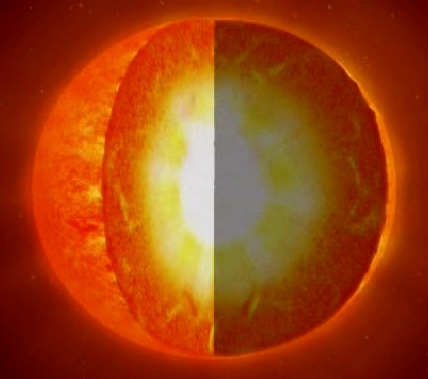When global oscillations of the Sun were discovered, scientists realised they opened a window to the Sun’s interior. Like the propagation of seismic waves on Earth providing information about our planet’s interior, sound waves travel throughout the Sun carrying information about what is happening below the surface.
These oscillations can also be observed on other stars. They can be detected through the variation in the light emitted by the star as the surface wobbles – the technique used by COROT. This reveals the internal structure of the star, and the way energy is transported from the core to the surface.

When looking at stars, COROT is able to detect ‘starquakes’, acoustical waves generated deep inside a star that send ripples across a star’s surface, altering its brightness. The exact nature of the ripples can allow astronomers to calculate the star's mass, age and even chemical composition. This technique is known as asteroseismology and ESA’s Solar and Heliospheric Observatory (SOHO) has been taking similar observations of the Sun for years. Credits: CNES
“Other techniques to estimate stellar oscillations have been used from the ground, but they are limited in what they can do,” said Malcolm Fridlund, ESA Project Scientist for COROT at ESA’s European Space Research and Technology Centre (ESTEC), in the Netherlands, and co-author of the results.
“Adverse weather conditions, plus the fact that you cannot observe stars during daytime, oblige ground astronomers to interrupt their observations,” he continued. “Now, the key to detecting such small stellar oscillations from big distances is not only the sensitivity of an instrument, but also the opportunity of observing the star without interruption: any interruption produces noise in the data that can cover a signal completely. Therefore, to be certain, we must approach the question with the right instruments and from space.”
The three stars probed by COROT – known as HD499933, HD181420 and HD181906 – are similar to the Sun. They are not exactly in our stellar neighbourhood, but rather far away, so their brightness doesn’t blind COROT’s instruments.
“The fact that COROT succeeded in probing the interior of Sun-like stars with direct measurements for the first time is a huge leap in understanding stars in general”, added Fridlund. “In addition, this will help us to understand, by comparison, our own Sun even better.”
Article: E. Michel et al, ‘CoRoT measures solar-like oscillations and granulation in stars', Nature October 23 2008




Comments